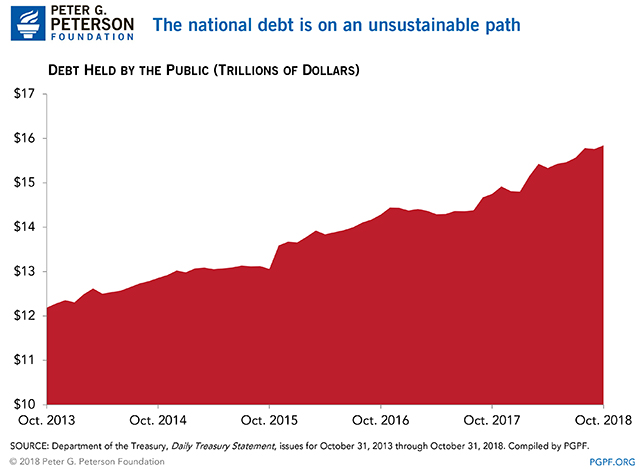You are here
Federal Deficit and Debt: October 2018
Every month the U.S. Treasury releases data on the federal budget, including the current deficit. Here is the data for October 2018, which was the first month of fiscal year 2019.
Federal Deficit: October 2018
- Federal Budget Deficit for October 2018: $100 billion
- Federal Budget Deficit for October 2017: $63 billion
The deficit for October 2018 was $37 billion more than it was in October 2017, Most of that difference was caused by a timing shift of payments that reduced the size of the October 2017 deficit. Without that shift, the October 2018 deficit would have been about $7 billion less than it was a year ago.
Cumulative Federal Deficit through October 2018

- Cumulative Deficit Projected for FY19: $973 billion
- Cumulative FY18 Deficit: $779 billion
The projected increase in this year's deficit reflects a growing gap between spending and revenues that has been exacerbated by the fiscal effects of policies enacted over the past year.
National Debt through October 2018

- Debt Held by Public through October 2018: $15.8 trillion
- Debt Held by Public through October 2017: $14.8 trillion
While the deficit varies from month-to-month, and may even decline some months — for example, in April when taxpayers are submitting their personal income taxes — debt and deficits are on an unsustainable upward trajectory. The CBO projects that national debt could rise to about 150 percent of gross domestic product by 2048. That level of debt would far exceed the 50-year historical average of approximately 40% of GDP.
Why are such high-levels of debt so concerning? There are many reasons that Americans should be concerned about the rising national debt — particularly if you are concerned about economic growth, investments in our nation’s future, and preservation of our social safety net.
